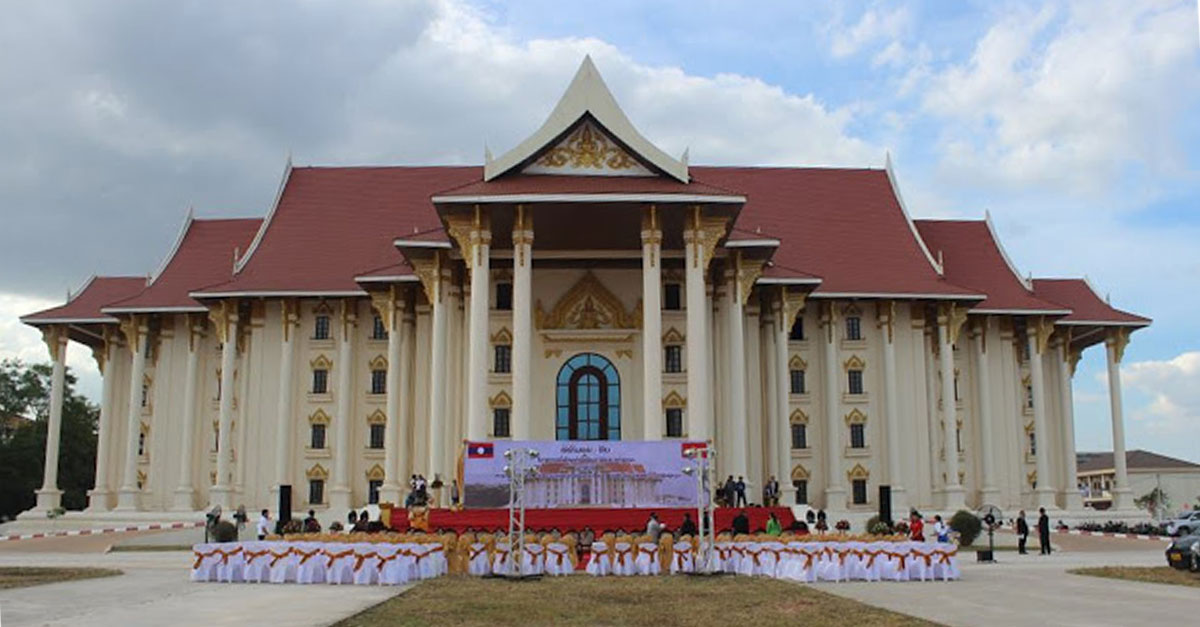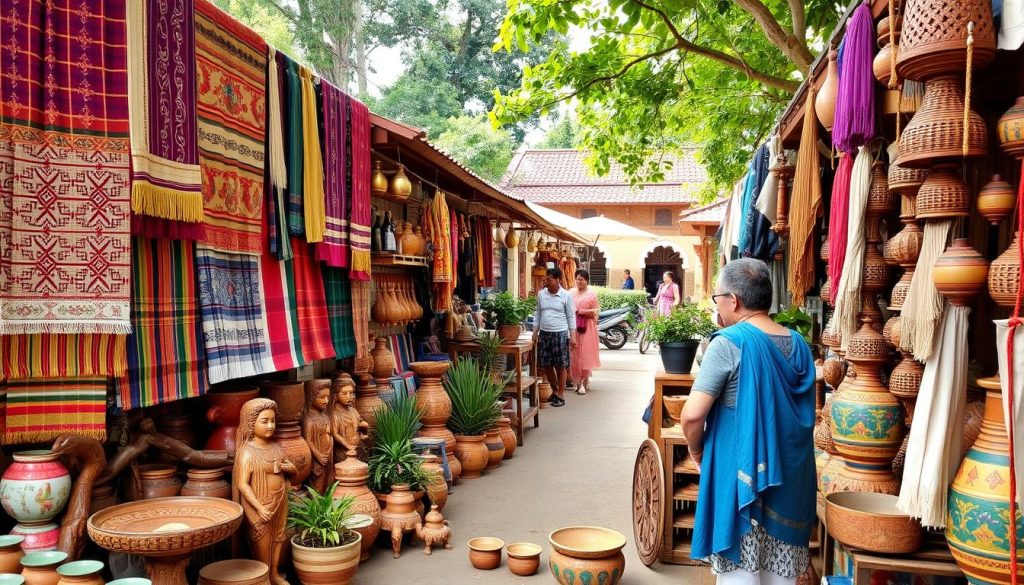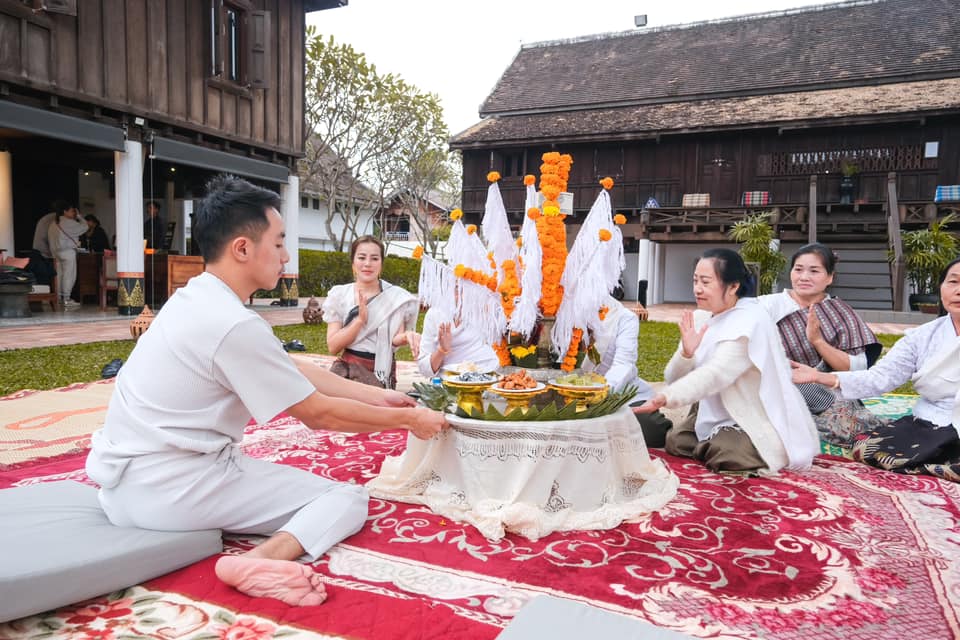1. Overview & Address of the Place
Lao National Museum, also known as the Lao National History Museum, is an important institution in Vientiane, Laos, dedicated to preserving and showcasing the country’s rich history and culture. The museum offers a comprehensive collection of artifacts, ranging from prehistoric items to items from the modern era, including Laos’ struggle for independence and the impact of the Vietnam War.
Name: Lao National Museum
Location: Vientiane, Laos
Coordinates: 17.9750° N, 102.6330° E
Best visited: While exploring Vientiane’s cultural and historical landmarks or seeking to understand the nation’s heritage.
2. History of the Place with 10 Key Facts & Google Maps Link
Lao National Museum has an important history in showcasing Laos’ cultural and revolutionary heritage:
- Establishment: Founded in 1980 as the Lao Revolutionary Exhibition Hall.
- Location: Housed in the former French Governor’s Residence, built in 1925.
- Renaming: Renamed to the Lao National Museum in 2000 to reflect a broader historical focus.
- Mission: To preserve and promote Laos’ history, culture, and national heritage.
- Exhibits: Features items ranging from prehistoric artifacts to items from Laos’ struggle for independence.
- Revolutionary History: Includes a section dedicated to the revolutionary movements and the struggle for independence from French colonialism.
- Colonial History: Highlights the impact of the French colonial era on Laos, with a variety of artifacts and documents.
- Educational Role: The museum serves as a key educational resource for students, researchers, and tourists.
- Recognition: Visited by dignitaries and tourists from around the world, showcasing its global cultural importance.
- Restoration: In recent years, the museum has undergone renovations to preserve its collections and improve visitor experience.
3. What Makes “Lao National Museum” Popular? + Recommended YouTube Video
Lao National Museum is a must-visit for its comprehensive collections and educational value:
- Cultural and Historical Significance: Offers a deep dive into the history and culture of Laos, including its colonial past, war history, and revolutionary struggles.
- Architectural Beauty: Housed in a beautiful French colonial building, adding to its historical charm.
- Educational Exhibits: A resource for anyone wanting to learn about Laos’ rich cultural heritage.
4. Overall Ratings (1 to 5 Stars)
Lao National Museum is highly regarded by visitors:
Overall Rating: ⭐⭐⭐⭐⭐ (5/5)
Cultural Significance: ⭐⭐⭐⭐⭐ (5/5)
Authenticity: ⭐⭐⭐⭐⭐ (5/5)
Atmosphere & Environment: ⭐⭐⭐⭐☆ (4/5)
Accessibility: ⭐⭐⭐⭐☆ (4/5)
Tourist Friendliness: ⭐⭐⭐⭐⭐ (5/5)
5. Weather
Vientiane experiences a tropical climate with distinct wet and dry seasons:
Best Time to Visit: November to February (cooler, dry season)
Temperature Range: 25–35°C (77–95°F)
Wet Season: May to October
Rain Gear: Recommended during the wet season.
6. Nearest Five Hotels
For visitors seeking accommodation near the Lao National Museum, here are five great options:
- Sabaidee@Lao Hotel: Comfortable, centrally located with convenient access to major attractions.
- Vientiane Plaza Hotel: Modern amenities with proximity to the museum.
- Green Park Boutique Hotel: Traditional and contemporary style offering a peaceful stay.
- City Inn Vientiane: Budget-friendly with easy access to the museum.
- Ibis Vientiane Nam Phu: Centrally located with essential amenities for travelers.
7. Timings
Lao National Museum operates during standard hours:
Opening Hours: 8:00 AM – 4:00 PM daily
Best Time to Visit: Early morning or late afternoon to avoid crowds and enjoy a more relaxed experience.
8. Time Required to Visit
Visiting the Lao National Museum can take a couple of hours to fully appreciate the exhibits:
Visit Duration: 1–2 hours
Ideal for: History enthusiasts, cultural explorers, and anyone interested in learning about Laos’ heritage.
9. Entry Fees & Ticket Booking Details
There is an entry fee to visit the Lao National Museum:
Entry Fee: 30,000 LAK for foreigners; 5,000 LAK for Lao nationals
Booking: Not required for general visits.
10. Things to See & Do
Visitors can explore a wide range of historical artifacts and exhibits:
- Explore: The museum’s diverse collections, including prehistoric, colonial, and revolutionary-era artifacts.
- Learn: About Laos’ cultural history, from its early civilizations to modern-day struggles.
- Photography: Capture the museum’s impressive architecture and historical displays.
11. Best Time to Visit
The best time to visit is during the dry season when the weather is cooler:
Best Time: November to February (cooler, dry season)
Time of Day: Early morning or late afternoon for fewer crowds and optimal lighting.
12. Nearest Parking Spots
Street parking is available near the Lao National Museum, and there are public parking spaces in the surrounding area:
Street Parking: Available near the museum.
Public Parking: Located near major landmarks such as Patuxai.
Alternative: Tuk-tuks and bicycles are popular and convenient for getting around.
13. Tips for Visitors
- Dress Modestly: As a cultural and historical site, visitors should dress respectfully.
- Take Your Time: The museum has a lot to offer, so allocate sufficient time for exploration.
- Stay Hydrated: Vientiane can get quite hot, so bring water for comfort.
- Photography: Be mindful of photo restrictions inside certain exhibit areas.
14. How to Reach the Place
The Lao National Museum is centrally located in Vientiane and can be easily accessed by foot, tuk-tuk, or bicycle:
By Tuk-Tuk: Convenient and affordable for short trips.
By Bicycle: A great way to explore Vientiane at your own pace.
By Foot: Easily accessible from surrounding areas.
Taxi: Available for longer trips.
15. Nearby Attractions to Combine for the Visit
While visiting the Lao National Museum, consider exploring other nearby landmarks:
- Patuxai (Victory Monument): A short walk from the museum, offering panoramic views of the city.
- That Luang Stupa: The most significant Buddhist monument in Laos.
- Wat Si Saket: The oldest surviving temple in Vientiane.
- COPE Visitor Centre: Learn about the impact of unexploded ordnance in Laos.
- Mekong Riverfront: A scenic area for shopping, dining, and relaxing along the river.



